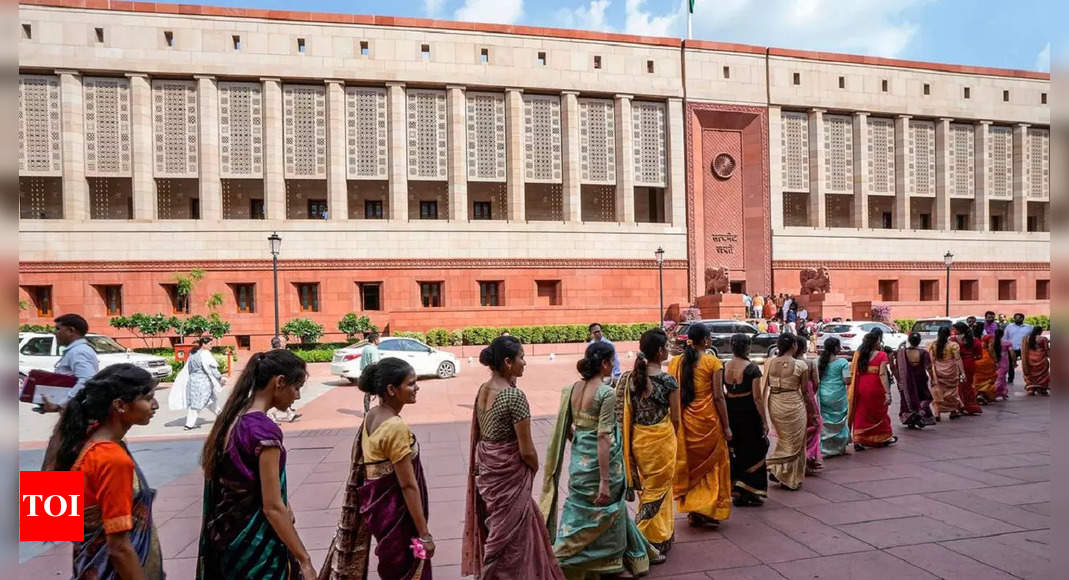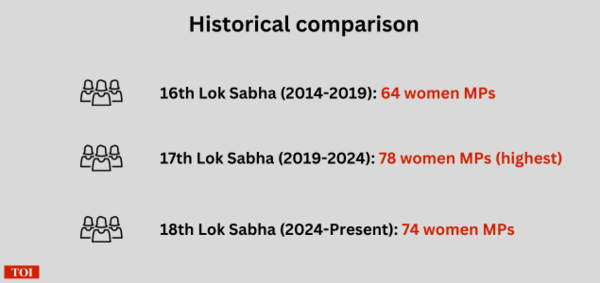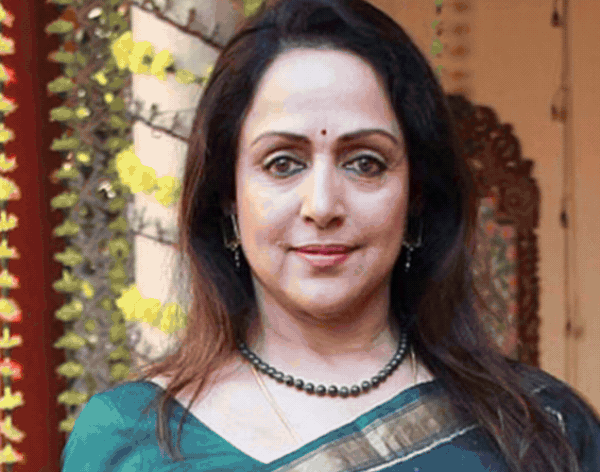
Women’s representation in elections
In terms of women’s representation in polls, the trend shows a slight upward trajectory over the past 15 years.
The number of women contesting general elections has increased from 2.9 per cent in 1957 to nearly 10 per cent in 2024.
This marked a steady increase from previous elections: 7 per cent in 2009, 8 per cent in 2014, and 9 per cent in 2019.
Parties’ contribution
In the realm of party contributions to women’s representation in the 2024 Lok Sabha elections, the Bharatiya Janata Party (BJP), Indian National Congress (INC), and All India Trinamool Congress (AITC) stand out as the main contributors.
BJP led with 69 women out of 440 Lok Sabha nominees, constituting 16 per cent. The Congress had 41 women out of 327 candidates, making up 13 per cent.
Notably, smaller parties and regional players fielded a higher proportion of female candidates.
The Naam Tamilar Katchi achieved equal gender representation with 50 per cent women candidates. Other parties with significant female representation include Lok Janshakti Party (Ram Vilas) and Nationalist Congress Party, each with 40 per cent women candidates.
The Jharkhand Mukti Morcha (JMM) and Biju Janata Dal (BJD) both had 33 per cent female representation, while the Rashtriya Janata Dal (RJD) had 29 per cent. The Samajwadi Party (SP) had 20 per cent, and the All India Trinamool Congress (AITC) had 25 per cent.
Success rate and historical trends
The success rate of women contestants has varied over the decades. The 18th Lok Sabha (2024) had over 13.62 per cent female MPs. This is a marginal drop from the 17th Lok Sabha, which had the highest female representation at over 14 per cent.

State-level dynamics
State-level trends depict a mixed picture, with some states experiencing a drop in the number of women winners while others witnessed a slight increase.
This variation highlights the unique political landscapes across India’s states and the uneven progress in women’s political representation.
State-specific highlights
Odisha: Four females were winners out of 29 contestants, a decline from seven in 2019. Notable winners include BJP’s Aparajita Sarangi and Sangeeta Kumari Singh Deo. Additionally, concerns arise regarding the dominance of candidates from royal backgrounds, potentially sidelining grassroots leaders.
Assam: Bijuli Kalita Medhi was the sole female winner among 12 female candidates. Despite high women voter turnout, only one female candidate from the BJP secured a seat.
Chhattisgarh: Three women MPs out of 11 seats, despite 29 women contesting. Major parties, BJP and Congress, fielded three women each, with limited success.
Maharashtra: Seven women MPs elected out of 17 female candidates fielded by major parties out of a vast electoral pool, indicating tokenistic representation rather than genuine gender parity.
Noteworthy winners
In the 2024 elections, women candidates like BJP’s Hema Malini, TMC’s Mahua Moitra, NCP’s Supriya Sule, and SP’s Dimple Yadav were leading and ultimately won.
Newcomers like Kangana Ranaut and Misha Bharati also made headlines with their victories. Among the youngest victors were Samajwadi Party’s 25-year-old Priya Saroj and 29-year-old Iqra Choudhary.

However, despite the high participation, none of the three transgender candidates who contested independently won seats. The total number of candidates in the fray was 8,360.
Global and national context
Despite the increase in female participation, India still trails behind other nations in gender representation in parliament.
India’s global ranking for women’s representation in the lower house of Parliament has fallen to 143 out of 185 countries, according to the Inter-Parliamentary Union’s Parline database.
Whereas, 46 per cent of MPs in South Africa are women, 35 per cent in the UK, and 29 per cent in the US.
India is positioned behind several countries like Vietnam, the Philippines, Pakistan, and China. This highlights a substantial disparity in gender representation on the international stage.
As of April 2024, there are 77 women lawmakers in India, making up 14.7% of the total seats. This modest figure comes despite the Indian Parliament passing a law last year to reserve one-third of Lok Sabha seats for women — a law that is yet to be implemented.
The involvement of women in India’s Lok Sabha elections demonstrates their growing participation in the political sphere. However, the modest increase in the number of winners indicates the persistence of systemic and societal obstacles.




